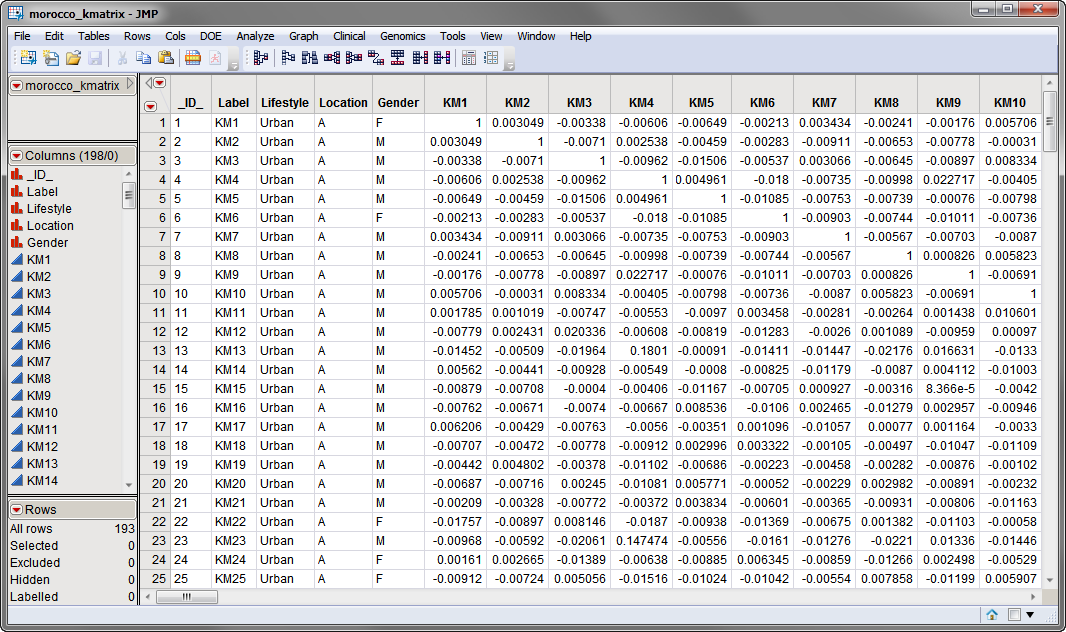The
K Matrix Compression
process clusters a symmetric relationship or estimated kinship matrix in order to reduce the size of the
random effect
that accounts for relatedness in the
Q-K Mixed Model
analytical process. The compressed matrix can be used to define the
covariance
structure in a down-stream
mixed models
for testing SNP-trait
association
. Compression can be done interactively through the JMP Clustering Platform where you can decide cluster membership via a cutoff level in
hierarchical clustering
based on visual inspection. Alternatively, clustering via PROC CLUSTER can be automated to produce a compressed
K matrix
based on a specified number of clusters. The optimized compression method scans through varying levels of compression to find the compression level that optimizes the fit of the mixed model to a specified
trait
(with the
SNP
effect excluded). This algorithm is described in Zhang et al. (Nature Genetics, 2010).
Warning
: In contrast to the
Q-K Mixed Model
process, which requires the square root of the K matrix to be used in the
model
, the
K Matrix Compression
process requires the K matrix before taking the square root. This process computes the square root of the compressed K matrix (via Singular Value Decomposition) so that the columns are appropriately formatted for input as random effect
variables
in the
Q-K Mixed Model
process.
Two data sets are needed for this process. The first required data set is the
input K matrix data set
. The
morocco_kmatrix.sas7bdat
data set, shown below, represents a 193 x 193 matrix of
Identity By Descent
(IBD) values calculated between individuals from genome-wide SNP using data from a study of gene
expression
variation and SNP associations in southern Morocco (Idaghdour, Czika,
et al
., 2010)
The second data set is the
SNP input
data set
.
The SNP input data set used in the following example, the
morocco_snps1exp.sas7bdat
data set, lists gene expression variation data and SNP associations in southern Morocco (Idaghdour, Czika,
et al
., 2010).
Note
:
To run optimized compression, a trait variable must be specified from the
SNP Input Data Set
tab. If the SNP,
phenotype
data and K matrix are all in the Input K matrix data set, a separate SNP input data set is not required. However, the K matrix input data set should be specified again as the SNP Input Data.
The
morocco_snps1exp.sas7bdat
data set lists
genotype
data at 4744 SNPs in 193 individuals. Marker data is presented in the one-column format. This data set is partially shown below. Note that this is a wide data set; markers are listed in columns, whereas individuals are listed in rows.
Both data sets are included in the
Sample Data
folder.
For detailed information about the files and data sets used or created by JMP Life Sciences software, see
Files and Data Sets
.
The output generated by this process is summarized in a Tabbed report. Refer to the
K Matrix Compression
output documentation for detailed descriptions and guides to interpreting your results.

